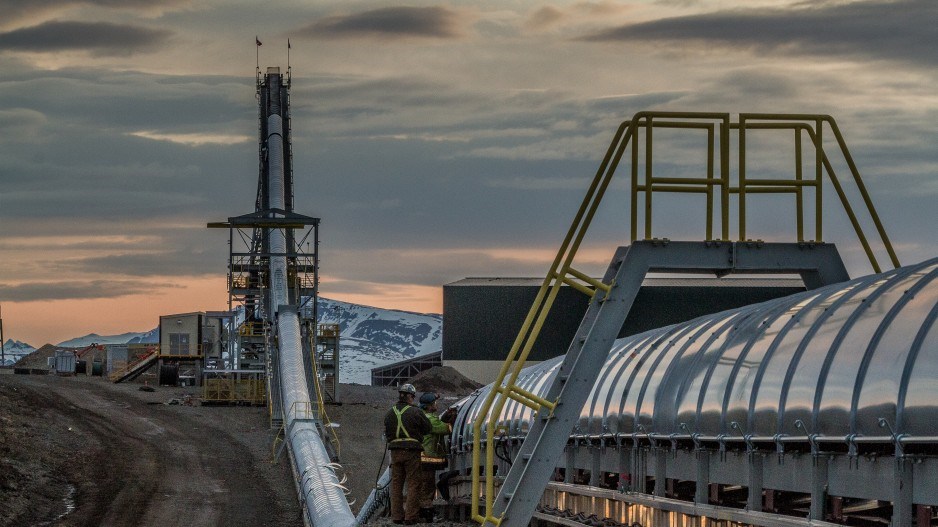The Canadian mining sector became the country’s top target market for inbound foreign direct investment (FDI) from the Asia Pacific region in 2020, the result of a COVID-induced slowing of the perennial front-runner (energy) and the sector’s resilient reputation.
That’s the finding of the Asia Pacific Foundation’s Investment Monitor 2021 report, which saw the mining sector attract 13 FDI deals valued at $1.13 billion – accounting for 14% of all FDI inflow into Canada from the Asia Pacific region.
The number was driven by two major deals: an Australian company’s $495 million purchase of the Red Lake Gold Mine complex and a Chinese firm’s $323 million acquisition of Guyana Goldfields and Aranka Gold. The deals also place mining second overall in attracting Asia-Pacific FDI since 2003 with $35.9 billion. That is behind only the energy sector’s $109.9 billion and well ahead of consumer goods ($28.2 billion).
The report also showed Vancouver to be a major beneficiary of Asia-Pacific mining and industrial metals FDI as the metropolitan region has secured 81 deals totalling $18.3 billion since 2003 in the two sectors. That accounts for a whopping 72% of all Vancouver inbound investment over the last 18 years.
“If you ask somebody that works downtown in one of the big office towers, they probably have a strong understanding of our connection to the mining sector,” said Pauline Stern, program manager (Business Asia) at the Asia Pacific Foundation of Canada. “But from a marketing and public awareness perspective, mining – at least recently in the last five-to-10-year period – has really diminished in people’s understanding of what component of Vancouver’s economy it really represents.”
Most notably, the investment report highlighted that Vancouver’s growing tech sector attracted $38 million in FDI in the last three years, while mining, during the same period, attracted $4.4 billion – although researchers noted that is partially due to the mining industry’s high-value investments.
Also, the mining numbers do not discount an FDI shift towards sustainable and green economic models, Stern noted.
“Mining has a connection to digital and clean economies in that a lot of the [mineral] goods go into wind turbines and the tech components needed for that shift of energy sources,” she said. “Depending on who you ask, some people will have a deep understanding in the role mining plays in, say, electric vehicle production and the success of that sector in Canada. But it’s true that some people have a more traditional view of the mining sector as being more coal-based.”
Regardless of what’s driving the continued investment attractiveness of Canadian and B.C. mining, industry groups say it is clear from the numbers that the sector has a key role to play in Canada’s economic recovery.
In February, the Mining Association of Canada (MAC) said demand for minerals and metals is expected to grow as the world recovers from the pandemic, noting that Canadian production for 17 minerals and metals ranked in the global top five. The Toronto Stock Exchange (TSX) and the TSX Venture Exchange also continue to be top-ranked mining/exploration listing venues globally. Together they have accounted for 37% of global mining equity raised since 2016.
“The COVID-19 pandemic has underscored the significant role the mining sector plays in ensuring the materials people and businesses need now more than ever are both available and responsibly sourced,” said MAC President and CEO Pierre Gratton in a statement with its annual report.
Kendra Johnston, president and CEO of the Association for Mineral Exploration for British Columbia, said COVID uncertainty has driven demand in commodities like copper and gold, minerals that are well-represented in B.C.’s geology.
Because of that, the Canadian junior resource sector, which includes mining as well as oil-and-gas exploration, raised around $5.5 billion in financing last year, Johnston said. Many of those deals involved foreign participation.
“We have what’s shaping up to be an extremely active year.”
Johnston added that the mining’s economic impact is felt in communities throughout B.C. which is home to about 275 exploration projects a year. The average per-project spend is $1.8 million.
Approximately 97% of that funding stays in B.C., Johnston said, while as much as 38% stays in the communities where the explorations take place.
“I think we have a really bright future in British Columbia,” Johnston said. “We have a supportive government and the regulations and policies in place that work the way that we want it to work – and also in the way investors want for us to keep moving forward. So there are a lot of things aligned right now.” •




